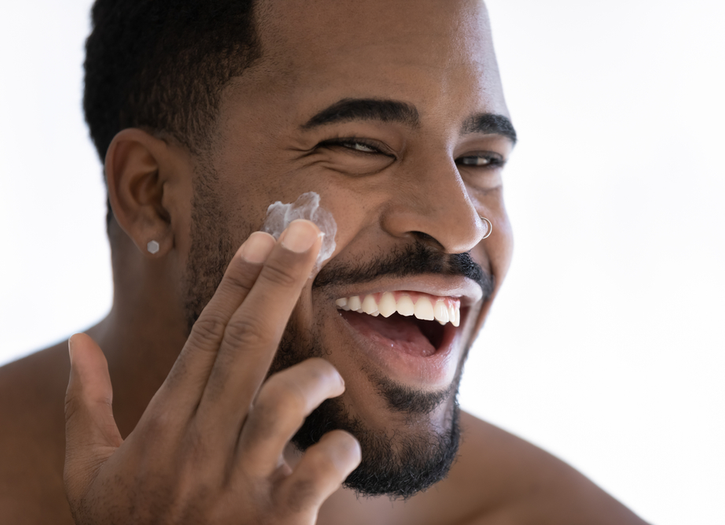Moisturizer, or emollient, is a cosmetic preparation used for protecting, moisturizing, and lubricating the skin. These functions are normally performed by sebum produced by healthy skin.
In the human body, water constantly evaporates from the deeper layers of the skin through an effect known as transepidermal water loss (TEWL). By regulating its water content, human skin naturally maintains a dry, easily shed surface as a barrier against pathogens, dirt, or damage while protecting itself from drying out and becoming brittle and rigid. The ability to retain moisture depends on the lipid bilayer between the corneocytes. Moisturizers modify the rate of water loss, with active ingredients of moisturizers falling into one of two categories: occlusives and humectants.
Occlusives form a coating on the skin’s surface, keeping moisture from escaping. The more occlusive the formulation, the greater the effect. Ointments are more occlusive than aqueous creams, which are more occlusive than lotion. Water loss through the skin is normally about 4–8 g/(m²⋅h). A layer of petrolatum applied to normal skin can reduce that loss by 50–75% for several hours. Oils naturally produced by the human body moisturize through this same mechanism. Humectants absorb water.
They can absorb this water from the air and moisturize the skin when the humidity is greater than 70%, but more commonly, they draw water from the dermis into the epidermis, making skin dryer. A study published in Skin Research and Technology in 2001 found no link between humectants and moisturizing effect. When used in practical applications, they are almost always combined with occlusives. Moisturizers often contain water, which acts as a temporary hydration agent and as a way for the absorption of some components and evaporation of the moisturizer.
There are many different types of moisturizers. Petrolatum is one of the most effective moisturizers, although it can be unpopular due to its oily consistency. Other popular moisturizers are cetyl alcohol, Cetearyl alcohol, cocoa butter, isopropyl myristate, isopropyl palmitate, lanolin, liquid paraffin, polyethylene glycols, shea butter, silicone oils, stearic acid, stearyl alcohol and castor oil, as well as other oils. Moisturizers may also be available as lotions, creams, ointments, bath oils, or soap substitutes. Mineral oils and waxes are insensitive to oxidation or rancidity.
For this reason, they have essentially replaced vegetable oils in emollients and topical medication. Moisturizer cosmetics may additionally contain antioxidants, ceramides, emulsifiers, fragrances, penetration enhancers, preservatives, and solvents. In addition, some products are marketed as having anti-wrinkle and skin enhancement effects. However, with little scientific evidence, many plant and animal extracts have been claimed to impart skin benefits.
Moisturizers are used to treat certain skin diseases, such as psoriasis, ichthyosis Vulgaris, xerosis, and pruritus in atopic dermatitis. They are often bases or vehicles for topical medication, such as in Whitfield’s ointment. They are often combined with humectants, such as salicylic acid and urea. Moisturizers are also widely used in sunscreens, antiperspirants, skin cleansers, shaving creams, aftershaves, and hair tonics. In addition, moisturizers are used in disposable napkins to prevent dry skin and napkin dermatitis.







Add Comment